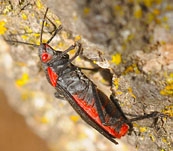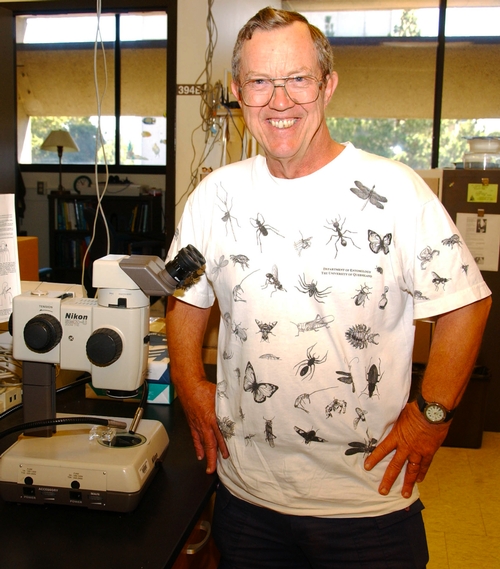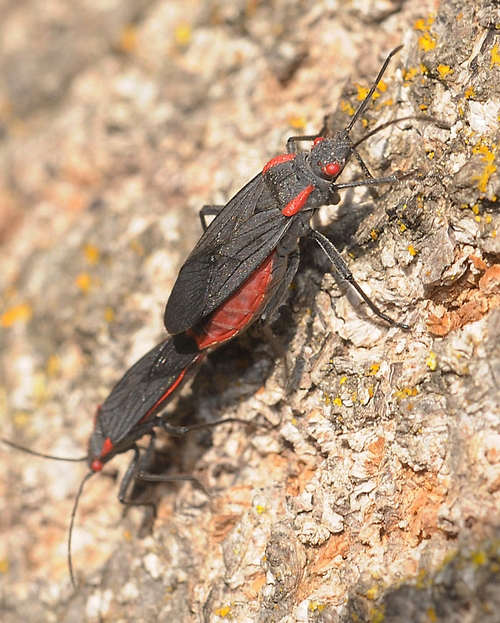
That would be "the rapidly evolving soapberry bugs."
Hugh Dingle, emeritus professor of entomology at UC Davis, will present a UC Davis Department of Entomology seminar from 12:10 to 1 p.m. on Wednesday, Nov. 10 in 122 Briggs Hall.
His topic: "And the Beak Shall Inherit: Contemporary Local and Reverse Evolution in Morphology and Life History in American and Australian Soapberry Bugs."
Professor Sharon Lawler of the Department of Entomology faculty will introduce him.
Dingle's lecture will be webcast live, and then will be archived on the UC Davis Department of Entomology website.
During his 20-year tenure on the UC Davis faculty, Dingle studied various aspects of insect migration “and especially the relation between migration and the evolution of life histories.”
“One aspect of these studies,” he said, “was the rapid contemporary evolution of insects (soapberry bugs) on introduced host plants (golden rain trees), including the interesting genetic relationships between feeding habits and variation in the ability to fly and migrate.”
His seminar will focus on laboratory-selection experiments on North American soapberry bugs designed to assess the genetic relationships among rapidly evolving traits, including the feeding apparatus and the structure and function of wings and wing muscles, necessary to migratory behavior.
“The bugs respond rapidly to selection for both forward and reverse evolution, demonstrating that the genetic variation necessary for evolution is present in the bugs even after intense natural selection,” Dingle said.
Of particular interest is a genetic correlation between mouthpart structure and wing morph frequency so the two traits share genes and evolve together. “The ecology of the bugs reveals why this might be the case,” he said. “A similar rapidly evolving soapberry bug system exists in Australia allowing intercontinental comparisons of contemporary evolution in these bugs as a consequence of the introduction of exotic host plants.”
For the last seven years, Dingle has been living and doing research at the University of Queensland, Brisbane, Australia. Now a resident of Davis, he is continuing his research from his headquarters in the Lawler lab.
Dingle received his bachelor's degree in zoology, with honors, from Cornell University, and his master's and doctorate degrees in zoology from the University of Michigan.
Meanwhile, be sure to check out UC Davis researcher Scott Carroll's website on soapberry bugs. Carroll, also associated with the Lawler lab, maintains a Flickr site and invites images of soapberry bugs.
Evolution in action...
Attached Images:

Hugh Dingle

Soapberry Bugs